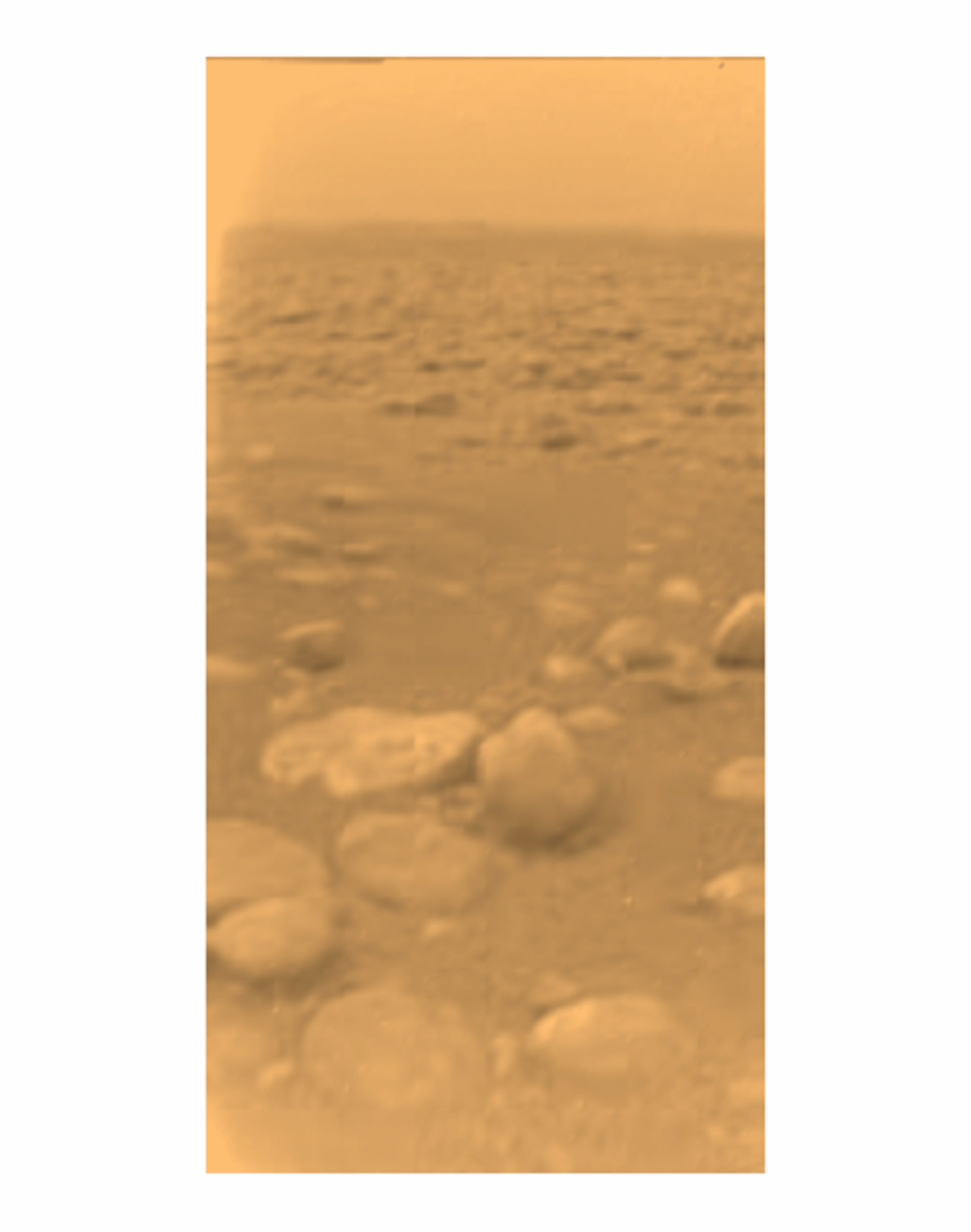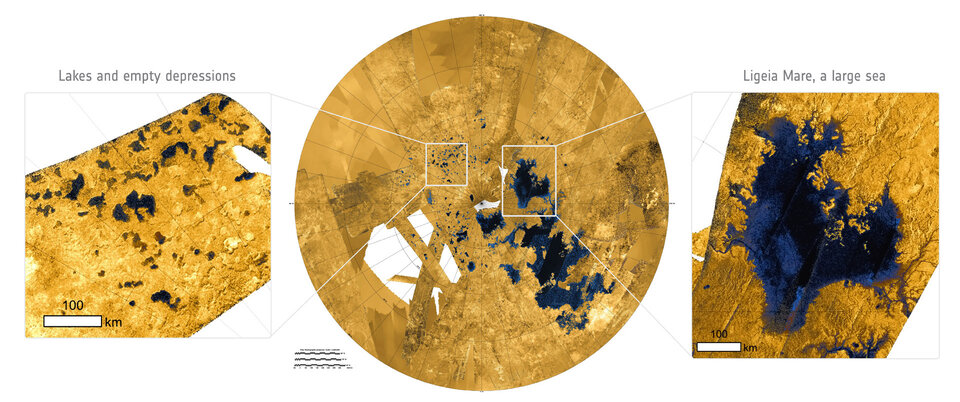Titan's surface
Over the years, scientists have dramatically changed their minds about Titan's surface.
In the 1990s, the NASA/ESA Hubble Space Telescope spied an area on Titan that was brighter than the rest.
Subsequent observations showed the same feature better. What are these bright and dark patches? Some scientists believed the bright area could be a continent and the rest oceans, but no one knew for sure, until the arrival of Cassini-Huygens.
During the two-and-a-half hour descent of Huygens under parachute, features that looked remarkably like shore lines and river systems on Earth appeared from the atmospheric haze. But rather than water, with surface temperatures of around –180ºC, the fluid involved here is methane, a simple organic compound. The probe touched down on a frozen surface littered with rounded pebbles.
Meanwhile, Cassini radar-mapping from orbit revealed a surface pockmarked with lakes and seas of liquid hydrocarbons.










